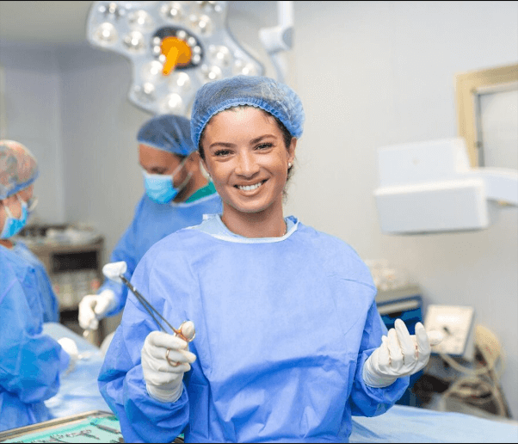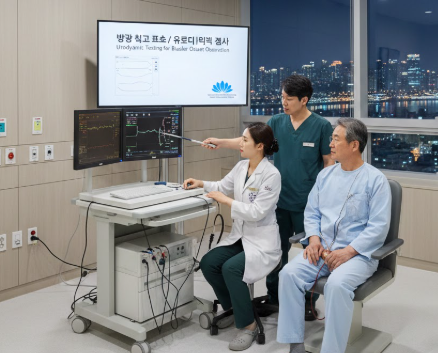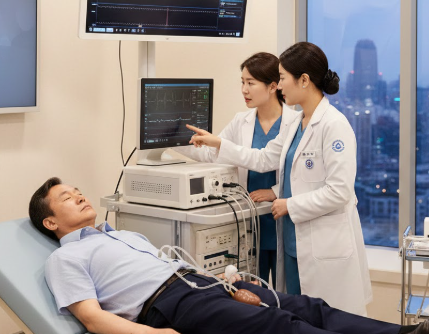Treatment Overview
The Advanced Laparoscopic Endometriosis Surgery (ALES) in Korea is a state-of-the-art minimally invasive procedure designed to precisely diagnose, map, and surgically treat endometriosis lesions with maximum preservation of pelvic anatomy and function. This surgery utilizes high-definition 3D laparoscopic imaging, advanced dissection tools, and microsurgical techniques to remove endometriotic tissue with exceptional accuracy.
Korea is a global leader in endometriosis surgery, integrating innovative laparoscopic technology with a multidisciplinary approach. This combination makes Korea one of the most sought-after destinations for women requiring specialized endometriosis management.
Purpose & Benefits
Purpose:
- Provide precise removal of endometriosis lesions
- Relieve chronic pelvic pain, infertility, and other endometriosis-related symptoms
- Preserve fertility and pelvic function
- Reduce recurrence through complete lesion excision
Benefits:
- Minimally invasive with small incisions
- Superior precision for complete lesion removal
- Preservation of reproductive organs and pelvic anatomy
- Reduced postoperative pain and faster recovery
- Enhanced fertility outcomes in women seeking conception
- Shorter hospital stay (often 1–3 days)
- Comprehensive mapping and treatment of deep endometriosis
Ideal Candidates
ALES is suitable for women who:
- Have confirmed or suspected deep infiltrating endometriosis
- Experience severe pelvic pain, infertility, or menstrual irregularities
- Wish to preserve fertility and pelvic function
- Prefer minimally invasive surgery over open surgery
Korean hospitals perform thorough preoperative evaluations, including ultrasound, MRI, and diagnostic laparoscopy if necessary, to design a personalized surgical plan.
Possible Risks & Complications
While advanced laparoscopic endometriosis surgery is generally safe, possible risks include:
- Minor bleeding or infection
- Injury to bowel, bladder, or ureters (rare but possible in deep endometriosis)
- Adhesion formation
- Recurrence of endometriosis
- Anesthesia-related complications
Korea’s expertise and technology significantly reduce these risks through precise lesion mapping and meticulous dissection.
Surgical Techniques Used
Korea’s advanced laparoscopic endometriosis surgery includes:
- High-Definition 3D Laparoscopy: Enhances visualization of deep lesions.
- Microsurgical Dissection: Minimizes damage to surrounding tissue.
- Energy-Based Vessel Sealing (Ultrasonic/Bipolar): Reduces bleeding and tissue trauma.
- CO₂ Laser or Plasma Energy: Used for precise lesion excision.
- Fluorescence Imaging (ICG): Improves identification of lesion margins and vital structures.
- Nerve-Sparing Techniques: Preserve nerve function to prevent chronic pain.
These methods allow Korean surgeons to achieve high success rates while minimizing risks.
Recovery & Aftercare
Recovery from ALES depends on the extent of disease and surgery but is typically quicker than open surgery. Most patients return home within 1–3 days and resume normal activities within 2–4 weeks.
Postoperative care includes:
- Pain management and incision monitoring
- Pelvic physiotherapy for optimal healing
- Avoiding strenuous activity for several weeks
- Follow-up imaging and assessment
- Hormonal therapy or other treatments if required
- Fertility planning and counseling if desired
Korean hospitals offer comprehensive postoperative programs to optimize recovery and reduce recurrence.
Results & Longevity
ALES offers significant long-term benefits:
- Effective removal of deep and superficial endometriosis lesions
- Relief from chronic pelvic pain
- Preservation of fertility and pelvic function
- Minimal scarring and faster recovery
- Lower recurrence rates with complete lesion excision
- Improved quality of life and symptom control
Korea’s specialized approach ensures high patient satisfaction and strong long-term outcomes.
Treatment Process in Korea
ALES in Korea follows a structured patient-focused pathway:
- Comprehensive Consultation & Diagnostics: Ultrasound, MRI, and lab tests to map lesions.
- Personalized Surgical Planning: Tailored to patient’s disease extent, fertility desires, and overall health.
- Advanced Laparoscopic Surgery: Using high-definition imaging and energy-based excision.
- Postoperative Recovery & Follow-up: Including physiotherapy, hormonal support, and fertility counseling.
Korean hospitals also provide concierge services for international patients, including travel arrangements, translation services, and accommodation.
Cost Range
The Advanced Laparoscopic Endometriosis Surgery in Korea generally costs between USD 10,000 and 20,000, depending on:
- Extent and complexity of endometriosis
- Technology and surgical methods used
- Hospital and surgeon expertise
- Length of hospital stay and postoperative care
Costs generally cover consultation, surgery, anesthesia, hospitalization, and postoperative follow-up.
Popular Clinics
- Severance Hospital (Yonsei University, Seoul): Leader in laparoscopic endometriosis surgery with fertility preservation techniques.
- Samsung Medical Center (Seoul): Offers precision-guided laparoscopic excision of deep endometriosis.
- Asan Medical Center (Seoul): Specialized in multidisciplinary endometriosis surgery.
- CHA Gangnam Medical Center: Known for nerve-sparing laparoscopic endometriosis surgery.
- Ewha Womans University Medical Center: Offers advanced endometriosis surgery with integrated rehabilitation programs.




